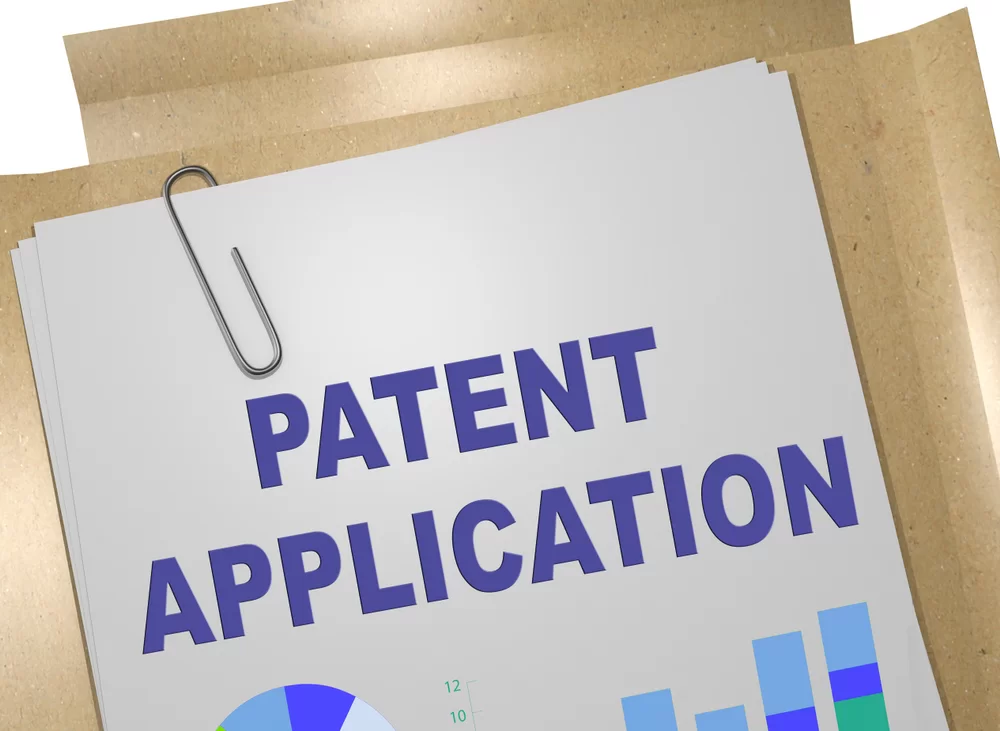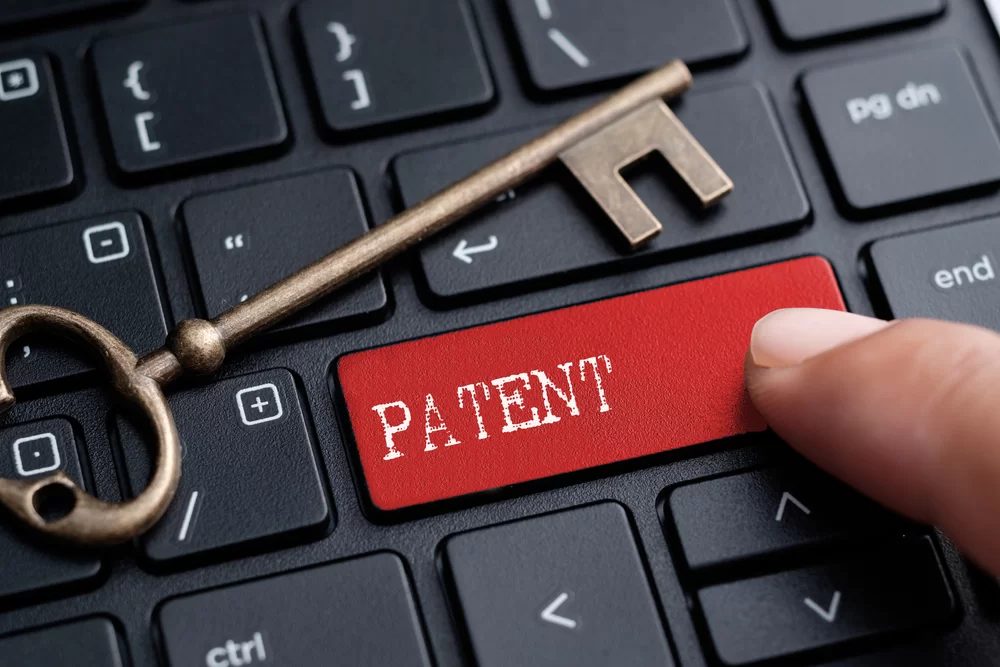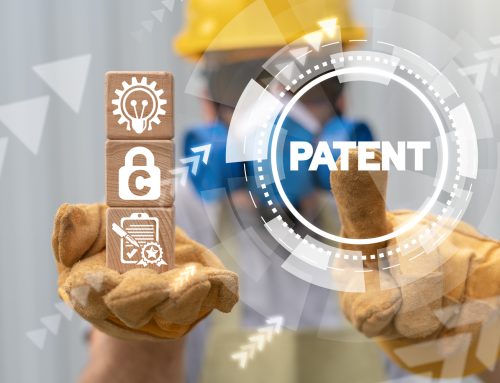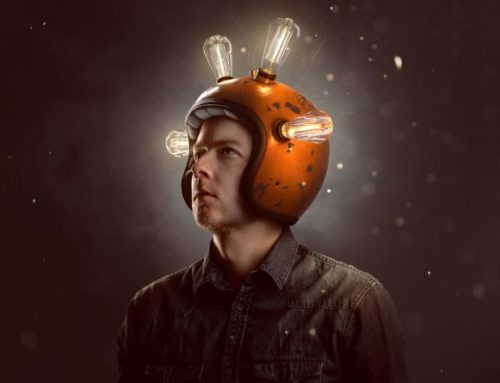What is a Patent?
Let Tucker Law help provide you both basic patent facts, as well as the complex nuances of the practice. A patent is a form of legal protection granted by the government to inventors for their original and useful discoveries or creations, such as products, processes, or machines. Patents give the holder exclusive rights to prevent others from making, using, or selling the invention for a certain period of time, usually 20 years from the date of filing. In exchange for this exclusivity, the inventor must publicly disclose the details of the invention so that others may learn from it. Patents are granted by the government and are enforceable in courts. Contact our patent attorney today at 1-800-TUCKERWINS!
Patent Law: The Fundamentals of Patent Protection
To be eligible for patent protection, an invention must be novel, non-obvious, and have a practical application. The patent application process is governed by patent law, and patent attorneys can advise inventors seeking to protect their creations.
The Patent Office is the location where patent applications are filed.
Inventors can file patent applications and obtain patent protection at the patent office. Filing a patent application, which includes detailed information about the claimed invention and prior art references, is the first step in obtaining patent protection.
What You Should Know About Patented Inventions
A patented invention is a novel and useful process, machine, manufacture, or material composition that has received patent protection. Inventions that have been patented are valuable assets that can be licensed or sold to potential partners.
Finding Relevant Prior Art in Patent Searches
Prior art refers to publicly available technical information that is relevant to the claimed invention. Patent searches are an important part of the patent application process because they assist inventors and patent attorneys in identifying potential prior art that may affect the outcome of the patent application.
Evaluating Patent Applications: The Patent Examiner
The patent examiner is in charge of evaluating patent applications to see if the claimed invention is novel and non-obvious. Before deciding whether to grant patent protection, the examiner will review the patent documents and conduct a search for prior art references.
Patent Maintenance Fees: How to Keep Your Patent Active
Once a patent is granted, it is critical to pay maintenance fees to ensure that the patent protection remains active. If these fees are not paid, the patent will expire and the invention will enter the public domain.
Patents are classified into three types: utility, design, and plant patents.
The most common type of patent is a utility patent, which covers new and useful processes, machines, manufactures, or matter compositions. Plant patents protect new plant varieties, whereas design patents protect ornamental designs.
Patenting Abstract Ideas and Concepts
It can be difficult to patent abstract ideas or concepts because the invention must have a practical application and cannot be an abstract idea. The Supreme Court has set guidelines on what can and cannot be patented, and patent attorneys can provide guidance on whether an invention is eligible for patent protection.
The Foundation of Invention is Research and Development.
The foundation of invention is research and development work, which allows inventors to explore new ideas and develop new technologies. This work may result in new inventions that qualify for patent protection.
Intellectual Property and Patent Protection
Patent protection is an important aspect of intellectual property because it allows inventors to protect their creations and prevent others from using or selling them without permission. Intellectual property also includes the protection of literary works and brand recognition.
How to Get a Patent: From Application to Issued Patent
Obtaining a patent can be a time-consuming process that involves the filing of a patent application and the review of the application by a patent examiner. A patent may be issued if the examiner determines that the invention is novel and non-obvious.
Key Factors in Patentability: Industrial Applicability and Inventive Step
Industrial applicability and inventive step are important factors in determining an invention’s patentability. To be eligible for patent protection, the invention must have a practical application and be non-obvious.
Advice from Patent Attorneys and Agents for Inventors
Patent attorneys and agents can be extremely helpful to inventors seeking patent protection. They can help with the patent application process, conduct patent searches, and provide guidance on patent law and the patenting process.
What You Need to Know About Basic Patent Facts
Patents are a type of legal protection for new and useful inventions that grant the inventor the exclusive right to make, use, and sell the invention for a specified period of time. A patent must be obtained if the invention is novel, non-obvious, and has a practical application.
Patent Attorneys and Agents: Professional Advice for Patent Applicants
Patent attorneys and agents can offer valuable advice to inventors seeking a patent. They can help with the patent application process, conduct patent searches, and provide guidance on patent law and the patenting process.
Patent Documents and Filing Dates: Important Elements in the Patenting Process
Patent documents and filing dates are important aspects of the patenting process. The patent application is filed on the filing date, and the patent document contains detailed information about the claimed invention.
Utility Patents: Defending New and Useful Methods
Utility patents protect new and useful processes, machines, manufacturing processes, or matter compositions. They are the most common type of patent and can offer valuable protection to inventors in a wide range of fields.
Expiration of a Patent: When Does a Patent Expire?
Patent protection typically lasts 20 years from the date of filing of the patent application. When a patent expires, the invention enters the public domain and can be freely used by others.
New and useful processes are essential for obtaining a patent.
To be eligible for a patent, the claimed invention must be novel, useful, and have a practical application. This requirement is a critical factor in determining whether an invention is patentable.
The Trademark Office: Defending Brands and Logos
The trademark office is in charge of safeguarding brands and logos. Trademarks are a type of intellectual property that can provide valuable protection for businesses looking to build brand awareness and protect their assets.
Ordinary Skill and Predictable Results: Determinants of Patentability
Ordinary skill and predictable results are factors considered when determining patentability of an invention. If the invention can be made by someone with ordinary skill in the relevant technical field and is predictable to someone skilled in the art, it may not be patentable.
Patenting at an Early Stage: Protecting New Inventions
Patenting at an early stage can be critical for protecting new inventions. Inventors can protect their ideas as they progress through the research and development stages by filing a patent application early in the development process.
Ornamental Design Patents: Protecting the Aesthetics of a Product
Ornamental design patents protect a product’s unique, non-functional design features. This can be useful for businesses looking to protect their product’s aesthetics and prevent others from copying their designs.
Non-Obviousness: An Important Aspect of Patentability
Non-obviousness is a key factor in determining the patentability of an invention. If the invention is obvious to someone skilled in the art, it may not be patentable.
Patent Information and the Grace Period: Patent Law Navigating
The one-year grace period and patent information are critical components of navigating patent law. The grace period allows inventors a one-year window after public disclosure of the invention to file a patent application.
Protecting New Innovations Through Technology and Patenting
Patents can provide valuable protection for new innovations in a variety of technical fields, so technology and patenting go hand in hand. Patentable technology can include anything from new chemical compounds to novel mathematical concepts.
Patent Lawyers and Agents: How to Navigate the Patenting Process
Patent attorneys and agents can be invaluable resources for inventors seeking patent protection. They can guide you through the patenting process and provide knowledge of the various requirements and regulations. However, patent agents can’t give legal advice and can’t consider patent infringement. For that reason, we recommend against having a patent agent draft your patent application if they do not work for a patent attorney’s office.
Claimed Invention Pertains to What?
In order to be eligible for patent protection, a claimed invention must have a practical application. This means that the claimed invention must be related to a useful process, machine, manufacture, or matter composition.
Roles and Responsibilities of Patent Agents
Patent agents are professionals who are licensed to assist inventors with the patent application process. They can assist in the preparation and filing of patent applications, as well as conducting patent searches and providing patent law advice. Because patent agents cannot give legal advice, they also can’t draft patents with infringement in full view. That is why it is best to avoid patent agents that are not working directly under a patent attorney with litigation experience.
Unlike Patents, Non-Traditional Inventions Can Receive Patent Protection
Unlike patents, unique and unconventional inventions may fall outside of the traditional categories of new and useful processes, machines, manufactures, or matter compositions. Unlikely patents include new software applications, business methods, and genetic material.
New and Useful Methods: The Basis for Patent Protection
Patent protection is built on new and useful processes, which can provide valuable protection to inventors looking to commercialize their inventions. The claimed invention must be novel, non-obvious, and have a practical application in order to be patentable.
Patenting Abstract Concepts
Because the invention must have a practical application and cannot be purely theoretical, abstract concepts can be difficult to patent. New algorithms, data structures, or mathematical methods are examples of abstract concepts that may be patentable.
Understanding Patent Portfolios: Single Patent vs. Patent Families
A single patent can protect a single invention, whereas patent families can protect a collection of related inventions under a single patent application. Understanding the advantages and disadvantages of each can be beneficial for inventors looking to build a strong patent portfolio.
Patent Protection and Chemical Compounds
Chemical compounds that are novel, non-obvious, and have a practical application may be eligible for patent protection. New drugs, polymers, and catalysts are examples of patentable chemical compounds.
Patent Protection vs. Copyright Protection
Both copyright and patent protection are forms of intellectual property protection, but they differ in what is protected. Copyright protection is commonly used to safeguard creative works such as music, literature, and art, whereas patent protection is used to safeguard new and useful inventions.
New Inventions: Navigating the Patent Application Process
For inventors looking to commercialize their ideas, new inventions can be valuable assets. Navigating the patent application process can be difficult, and you may need the help of a patent attorney or agent.
Patent Examples: Learning from Successful Patents
Successful patent studies can provide valuable insights into the patenting process as well as inspiration for new and innovative inventions. Patents that have been granted include everything from new medical devices to novel software applications.
The Evolution of Patent Law and KSR International
KSR International is a landmark Supreme Court decision that established new standards for determining patentability. The case had a significant impact on the patenting process and how patent attorneys and agents approached the application process.

Is my invention unique and non-obvious enough to warrant patent protection?
An invention must be novel, non-obvious, and have a practical application in order to be eligible for patent protection. To determine whether their invention meets these requirements, inventors may need to conduct a patent search or consult with a patent attorney or agent.
How do I go about applying for a patent?
The patent application process can be complicated, with numerous regulations and requirements. To ensure that their patent application is complete and meets all necessary requirements, inventors may need to consult with a patent attorney or agent.
How can I keep my invention from being copied?
When an invention is patented, the inventor obtains exclusive rights to manufacture, use, and sell the invention. Enforcing these rights, however, can be difficult, and inventors may need to consult with an attorney or agent before taking legal action against infringers.
What is the monetary worth of my invention?
Understanding the worth of an invention can be useful for inventors looking to commercialize their ideas. To determine the potential value of their invention, inventors may need to conduct market research or consult with industry experts.
How can I commercialize my invention?
Bringing an invention to market can entail several steps, such as manufacturing, marketing, and distribution. In order to bring their invention to market, inventors may need to seek out potential partners or investors.
Cost of Hiring a Patent Attorney
The cost of having a patent attorney draft and file a patent application varies greatly depending on several factors, including the complexity of the invention, the attorney’s experience and hourly rate, and the attorney’s geographic location.
According to the 2019 Economic Survey of the American Intellectual Property Law Association, the average cost of preparing and filing a patent application in the United States for a small entity (i.e., an independent inventor, a small business with fewer than 500 employees, or a nonprofit organization) is between $8,000 and $15,000. However, this is only an average; the actual cost may be significantly higher or lower depending on the circumstances.
In addition to the initial drafting and filing of the patent application, additional costs may be incurred in responding to patent office office actions, conducting prior art searches, and defending the patent against potential challenges or infringement. To avoid surprises later on, it is always a good idea to discuss the expected costs of the patenting process with your attorney right away.








